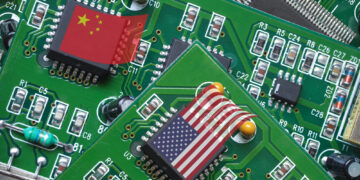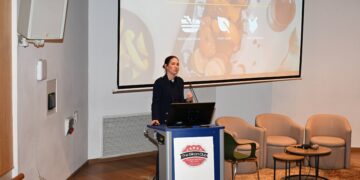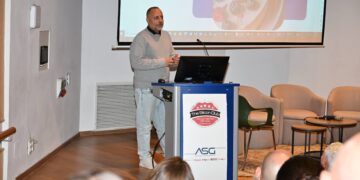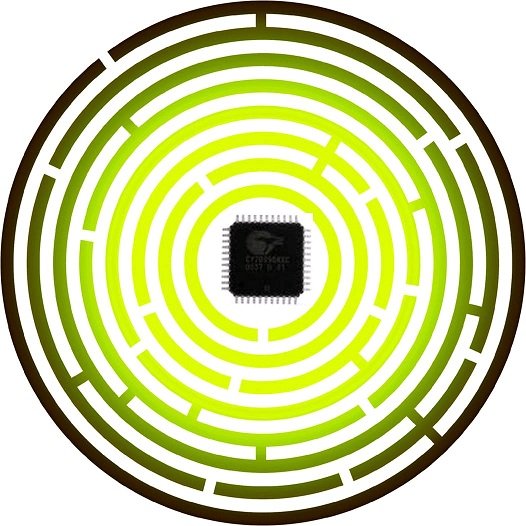Reliable Green Chip Power
IC Manufacturing Advances Threaten to Squander Global Electric Power.
Reliable Green Chip Power
In the days of the vacuum tube we expected electronic devices to burn out. Then transistors taught us to expect reliable energy efficient electronics devices. Today, advances in IC manufacturing technology are threatening to bring us back to the old days of burnout and wasteful high power consumption. Modern electronic devices recklessly squander millions of gigawatt hours of electrical energy yearly.
Why are PC fan getting bigger and bigger? Why do laptops get hot? Why does device performance degenerate over time? Nanometer IC manufacturing technology is the answer to these questions. Specifically as geometries get smaller, there are becoming too many complex rules for IC designers to follow. Breaking, bending and stretching the rules squanders power and accelerates time to failure.
The author envisions three potential response scenarios:
- Accepting Complacency. People are complacent about a global problem that they cannot see. People accept that all electronic devices dissipate heat, breakdown and need to be replaced. “Good enough” battery life is all the energy efficiency that people want from their mobile devices. Manufacturers have little incentive to exceed market demands for lower power and longer life devices.
- Reliable Green Chip Power. IC manufactures take the initiative to differentiate their products through low power and reliable operation. IC designers demand interactive EDA tools they need to check and correct reliability and power issues early in the design phase.
- Green Chip Power Standards. Individuals, nonprofit organizations and governments demand energy efficiency and reliability standards for electronic devices. IC manufacturers give designers the interactive design verification tools they need to comply with power standards.
Electronic Power Consumption in Perspective
The terms power and energy are frequently confused. When a light bulb with a power rating of 100W is turned on for one hour, the energy used is 100 watt-hours (Wh) or 0.1 kilowatt-hours (kWh). Major power production or consumption is rated in megawatts or gigawatts.
The electrical energy wasted to heat by computer servers in one year is measured in petawatt hours (pWh). One petawatt hour is equal to 1,000 terawatt hours of energy (1,000 tWh). And one terawatt hour of energy is approximately 114 megawatts of power sustained for a period of one full year.
The following figure puts some perspective of the cost of powering electronic devices.
Electrical Power – Orders of Magnitude
Image Source: Arnaud Tisserand, CNRS, IRISA laboratory
Power Dissipation
There is a constant race to achieve low power operation yet maintaining the design performance capabilities. The total of power dissipation in CMOS technology is the sum of two factors:
- Static power dissipation occurs when a CMOS circuit is in an idle state. Although devices are not activated there is still some static power dissipation which is a result of leakage current through nominally off transistors.
- Dynamic power dissipation occurs when a MOS transistor switches to charge and discharge the output load capacitance at a particular node at operating frequency.
When equipment power is turned on, ICs consume both dynamic power from transistor charging and static power from transistor leakage current. Power management design techniques involve a tradeoff among different parameters such as area, speed and design time without impacting performance.
Static & Dynamic Power consumption with Technology Scaling
Image: ITRS
As technology moves into deep nanometer arena, leakage power is becoming a critical design issue. In the past decade EDA tools evolved towards taking into effect various electro-thermal couplings between supply voltage, threshold voltage, frequency, and junction temperature. New EDA tools also create a reliability and thermally aware design environment. For example, Micrologic nanoRV presents a reliability-aware design environment to probe physical phenomenon such as electromigration at early design stages. The tool also includes thermal consideration according to the chip’s region operating temperature.
Reliability-Aware Design Reduces Power
IC physical design is a key factor in overall power consumption. EDA physical design tools must interpret the power intent and analyze the layout to achieve a significant overall power reduction. While many tools target the more common low-power topics and techniques, designers should address the full spectrum of issues that can have a significant affect on power savings.
Electromigration is the gradual displacement of metal atoms in a conductor. Poor electromigration design leads to thermal issues, impacting the overall power dissipation. Reliability-aware and temperature-aware designs are interrelated, since temperature directly affects electromigration.
Designers need interactive EDA tools to check reliability issues early in the design phase. The detection of reliability issues is especially critical in custom and semi-custom layout design. The results of early detection include both significant power savings and a higher product yield. Tools like Micrologic’s nanoRV™ work interactively within layout design platforms to produce virtually electromigration free physical design in digital, analog and mixed-signal designs.
A Simple Practical Example of Power Reduction
The CPU and memory consume about 116 watts of electrical power in a typical PC and electromigration accounts for one sixth of the total power wasted in the PC chips. $53.33B is the estimated cost of electrical power wasted by CPUs and memory in PCs and server worldwide due to electromigration in 2009, calculated based on data from Gartner and US Government agencies. The energy wasted on electromigration by electronic devices in 2011is measured in petawatt hours (thousands of terawatt hours).
Conclusions
Advanced IC manufacturing technology in small nanometers threatens to waste thousands and even millions of gigawatts of electrical power through electromigration. The global cost of electrical energy wasted on electromigration could reach into trillions of dollars a year. Energy wasted on electromigration pollutes the environments on a truly global scale. Reliability verification reduces electromigration and has a significant impact on power consumption
Several leading IC manufacturers are preparing to design reliable low power small nanometer ICs. Consumers and businesses alike need to be educated to demand greater power efficiency from both mobile and stationary electronic device manufacturers. The world cannot afford to be complacent about wasting electrical power in ICs.
*Dr. Danny Rittman is the co-founder and CTO of Micrologic Design Automation. Micrologic is a world leader of interactive reliability and verification tools that reduce power consumption and bring more reliable product to market faster.
.






























